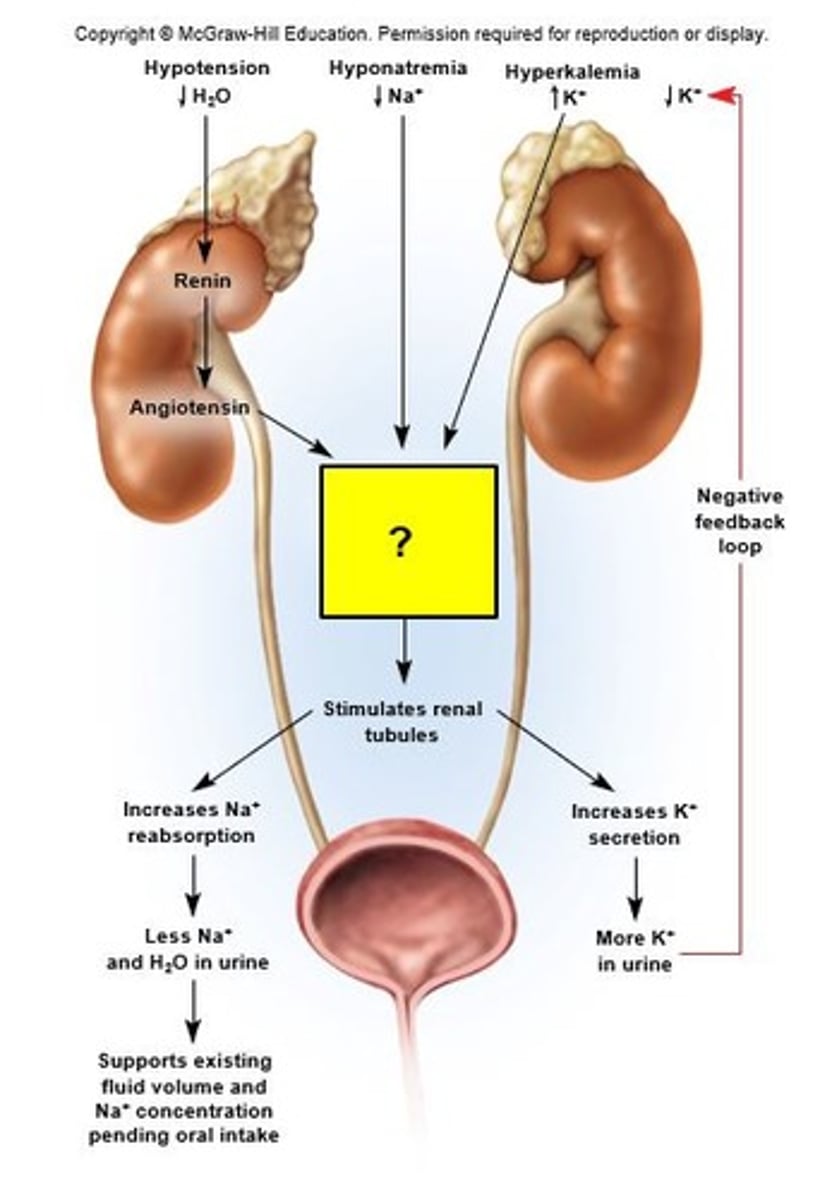Quiz 7- Chapter 24: McGrawHill (Fluid, electrolyte, Acid-base Balance) AP II | Quizlet
1/24
There's no tags or description
Looks like no tags are added yet.
Name | Mastery | Learn | Test | Matching | Spaced |
|---|
No study sessions yet.
25 Terms
Which of the following occurs when blood volume and pressure become too high?
ADH release is inhibited.
Where is the greatest volume of water in the body found?
Intracellular fluid (ICF)
What determines osmosis from one fluid compartment to another?
The relative concentration of solutes in each compartment
Most body water intake is from __________, whereas most body water lost is via __________.
drinking; urine
What is the function of antidiuretic hormone?
It promotes water conservation.
In response to dehydration, osmoreceptors stimulate the secretion of __________.
ADH
A hemorrhage results in which of the following?
A decrease in water volume without significantly affecting the osmolarity
What is the function of aldosterone?
It increases Na+ reabsorption and K+ secretion.
Which of the following is not caused by hypernatremia?
A reduction in plasma volume
Women have a tendency to retain water during part of the menstrual cycle because estrogen mimics the action of what?
Aldosterone
Which of these conditions is not a result of hyperkalemia?
The resting membrane potential is more negative.
Hypokalemia can result from all of the following except __________.
aldosterone hyposecretion
Chloride homeostasis is achieved mainly as a result of __________ homeostasis.
Na+
How is calcium concentration in the body regulated?
By hormones
Which of the following is a result of phosphate excretion from the body?
An increase in free calcium ions in the ECF
What is the normal pH of tissue fluid?
7.35 - 7.45
What protein is the most important buffer in blood plasma?
Albumin
Which of the following characterizes a weak base?
It binds a little H+ and has a weak effect on pH.
Which buffer system accounts for 75% of all chemical buffering in the body fluids?
The protein buffer system
Which of the following describes an antiport system on the basal side of renal tubule cells?
It exchanges K+ for Na+.
Acidosis has what effect on the resting membrane potential of nerve cells?
It causes hyperpolarization.
Breathing into and out of a paper bag for a long period of time will lead to __________.
respiratory acidosis
Chronic vomiting can lead to which of the following?
Metabolic alkalosis
A patient suffering from diabetic acidosis would display which of the following compensatory symptoms?
Hyperventilation
As shown in this diagram hypotension, hyponatremia, and hyperkalemia all stimulate the renal tubules through a common pathway. What is it? (What goes in the box with the question mark?)
Adrenal cortex releases aldosterone
